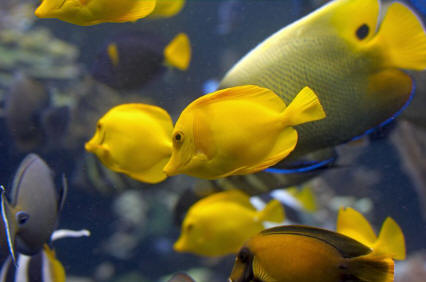Niger / Redtooth Triggerfish

|
Scientific Name: Odonus niger Price: Upon Request Origin: Indo-Pacific, Red Sea, Australia Family: Balistidae NOT AVAILABLE NOW |
|
Other Names: Black Triggerfish, Redtooth Triggerfish, Niger Triggerfish, Odonus Niger Trigger, Redfang Triggerfish, Blue Triggerfish. |
|
Technical Info
Temperature: 22 - 26 ℃
pH: 8.1 - 8.4
GH: 8 - 12
SG: 1.020 - 1.025
Max size: 50 cm
Min Tank size: 300 Ltr
Position in Aqua: Top swimmer
Description
The Niger Trigger or Redtooth Trigger is a striking fish for the home aquarium. The exact color of the Niger Triggerfish varies in this species of fish, and can also change from day to day between purple, blue and blue/green with a striking, lighter blue highlight on the fins and long tail lobes. The color temperature of the lighting also plays a role in the coloration of any fish in the home aquarium. As an adult, they acquire bright red teeth, and are normally dark purple in color with a blue/green highlight around their face making them quite interesting to watch when they eat.
Food
Meaty food and marine algae: squid, krill, clams, small fish and hard shelled shrimp to help wear down their ever growing teeth.
Breeding
The Niger triggerfish has, as far as we know, not been breed in aquariums. As it is a large fish it is safe to assume that breeding the Niger triggerfish would require a very large aquarium (pond) to provide them with enough space to display their spawning behavior.
Compatible with
The Niger Trigger fish is one of the less aggressive triggerfish. However, make sure that it is the smallest fish in the tank. Also, remember that they are incompatible with Blennies, Cardinalfishes, Dottybacks, Mandarinfishes and crustaceans. They will not harm corals. Niger Triggerfish may be kept with more than one of its own kind. However, they must be added simultaneously, as small juveniles for this to be possible.
Note
Use caution when you put your hands in the tank. It can deliver a very painful bite you will remember. It will try to rearrange everything in the tank which can damage and knock over corals.

